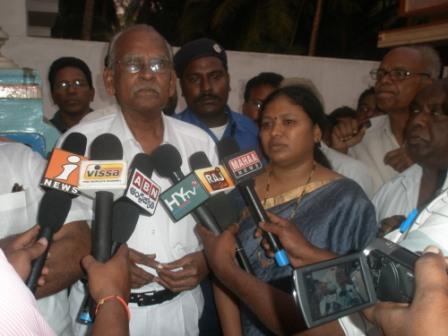Kuffir

An article in The Times of India a couple of days ago, titled ‘Missing the point on policing the moral police‘, expresses anger over the fact that instead of commiserating with the victims of the recent attack by Hindutva goons on a private party in a resort in Mangalore ‘a section of society is delivering homilies on women and culture’. The writer adds:
All this was evident at a seminar in Bangalore on Monday when some prominent women writers and activists articulated concerns on the need for modest dressing and preserving traditional values. Karnataka’s State Women’s commission chairperson C Manjula added fuel to fire saying: “We shouldn’t ignore the other side of the attack on girls in Mangalore which is about immodest dressing, illegal and immoral activities.” Advocate and former women’s commission chairperson Pramila Nesargi made it too obvious: “The perpetrators of the attack were only trying to prevent young people going astray.” Scholar M Chidananda Murthy said: “There were reasons to look beyond the attack, as there is a serious threat to the culture”
In other words, there were too many prominent voices in ‘civil’ society who were as eager, perhaps, to blame the victims as the attackers. If the attackers had adopted less violent means to express their displeasure then it seems very likely that most of civil society would have backed their actions. The ‘moral’ values the attackers seem to believe in so passionately seem to be shared by too many sections of our society, not just one or two. Why is it so? Why is it that the victims in Mangalore, and elsewhere, are more widely seen as ‘disrupters’ of order than are the attackers? The writer ends her article with these lines:
Given the diversity of our cultures and the increasing influence of a globalized world, the definitions of sartorial “presentability” too differ. What’s needed is the ability to distinguish the definition of individual rights and lawlessness that pretends to protect “moral values”. Just why the Mangalore incident can’t be seen as a law and order problem is the moot question.
Where was the ‘diversity of our cultures’ when the DGP of Andhra Pradesh, a few weeks ago, seemed to echo the views of the top police brass of Delhi, a few months ago, on how women need to dress? Do the guardians of women’s rights in Karnataka express any different views now? The problem with the attitude of the civil society and the administration is not that they can’t see the Mangalore incident as a ‘law and order problem’, but that they see it entirely as a ‘law and order problem’!
Around the same time as when the Mangalore incident occurred, a petition was being circulated online which urged readers to write to the District Magistrate of Karauli district to ‘end this tradition and provide security to the dalit women who are forced to follow this tradition.’ What was this ‘tradition’?
..”lower caste” women are asked to remove their footwear as they pass “upper caste” neighbourhoods. This has been happening for several years, in spite of untouchability having been declared illegal by the Constitution of India.
The ‘tradition’ in Karauli has also been recorded on video, and the film has been on the net for over a year. Why hasn’t it attracted as much attention as the Mangalore video? For the occasional Mangalore discussed threadbare in the media, a million Karaulis pass by unnoticed every day.
{youtube}EdosKk6htrQ{/youtube}
If the media and civil society were questioned about Karauli they would most probably say that it is a ‘cultural problem’, and they would be right. But why is Mangalore a ‘law and order’ problem and Karauli a ‘cultural’ problem? If you probe a little deeper, you’ll find that there is no contradiction in the understanding, of the administration or state machinery and the civil society, of Mangalore and Karauli. Both are ‘law and cultural order’ problems.
Their perception would run along these lines: the ‘lower caste’ women in Karauli were following the cultural ‘order’ imposed on them for years, and ages, whereas the ‘upper class’ girls in Mangalore were disrupting it. It is only the so-called progressive elements in society, like the writer in TOI, who view Mangalore and Karauli differently. Who would probably demand the banning of Bajrang Dals and Ram Senes in Karnataka but not the arrest of the entire Brahmin samaj in Karauli.
The reductionist tendencies of these ‘progressive’ elements are one of the bigger stumbling blocks in the path towards a more comprehensive understanding of the issues involved in the few Mangalores and the million Karaulis happening in India every day, of how Mangalore and Karauli are tied together. If culture is reduced to dress and diversity to ‘sartorial’ preferences then yes, arresting a few lower class youths would solve the problem of ‘lawlessness’ in Mangalore (or other cities), as the writer sees it, and protect ‘individual rights’. Until the next time, and the next.
But how would you solve the problem of ‘culture’ in Karaulis across the country? The developments that the petition brought about in Karauli are interesting. This report, again from TOI, calls it a success but there are contradictions in this success narrative. The Dalits are unsure about what they have gained and if they ever attempt to test the tenability of their newly acquired ‘individual rights’ they might face a fate much worse than the girls in Mangalore, once the ‘law’ decides to not monitor the ‘cultural order’ there so closely as it is doing now.
How would you cure the Brahmin samaj or caste society (or civil society as it calls itself in urban India), in Karauli and Mangalore, which incessantly and unanimously demands ‘order’? The values the Hindutva goons in Mangalore profess are not an aberrant conservative element in India’s social fabric, they form the yarn from which it is woven, as is obvious from the views expressed by various participants at the seminar the writer herself refers to. As is also obvious from the views expressed by top police officers, religious leaders, vice chancellors of universities, principals of colleges, filmmakers and politicians etc from time to time.
The attempt to eliminate or reduce the role of culture, the key causative factor behind Mangalore, is an attempt to sanitise it of caste, or ‘order’. To divorce Mangalore from Karauli, or effect from cause.
~~~
Cartoon by Unnamati Syama Sundar.










